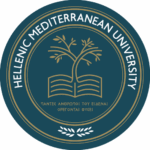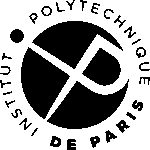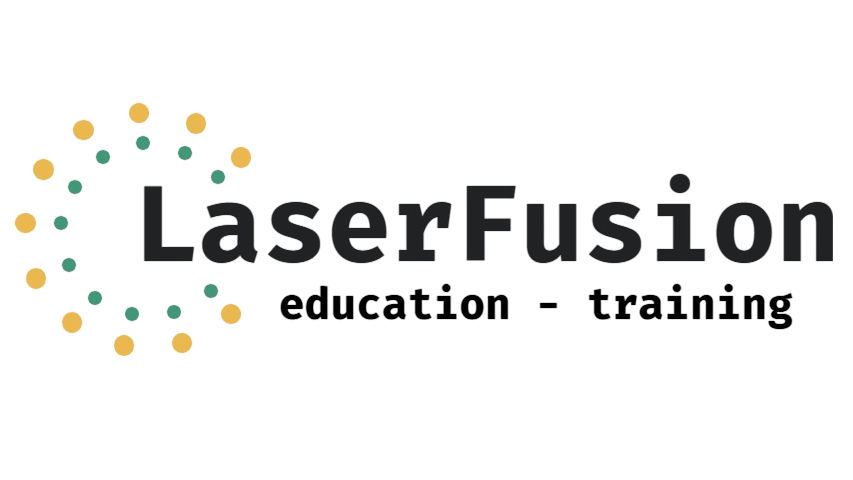
Hellenic Mediterranean University (HMU) – Greece
Contact person: Ioannis Fitilis (fitilis@hmu.gr)
The Hellenic Mediterranean University (HMU) is a public higher education institution with campuses across Crete, serving more than 15,000 students. Its Institute of Plasma Physics & Lasers (IPPL) is an internationally recognized center of excellence in high-power laser science and plasma physics, with active roles in the European HiPER program and the national research infrastructure HELLAS-CH. IPPL combines cutting-edge experimental facilities with advanced MSc and PhD programs such as Lasers, Plasma & Applications, training the next generation of researchers in inertial fusion energy (IFE). The institute has coordinated multiple Erasmus+ projects and attracted over €10M in funding, consolidating its role as a hub for European collaborations in laser-plasma research and education.

Université de Bordeaux (UBx) – France
Contact person: João Jorge Santos (joao.santos@u-bordeaux.fr)
Université de Bordeaux (UBx) is one of France’s top research universities, with more than 52,000 students and a strong track record in international collaborations. Its Centre for Intense Lasers and Applications (CELIA), a joint research unit with CEA and CNRS, is a leader in ultra-high-intensity physics, inertial confinement fusion, and warm dense matter studies. CELIA contributes actively to major European networks such as LASERLAB-EUROPE and operates advanced laser facilities ranging from femtosecond to megajoule-class systems. The group’s expertise spans particle acceleration, high-energy-density plasmas, and fast ignition schemes, with senior researchers coordinating national and European projects. UBx also integrates laser-plasma science into specialized MSc curricula, ensuring strong links between education and frontier research.

Universidad Politécnica de Madrid (UPM) – Spain
Contact person: Luca Volpe (l.volpe@upm.es)
UPM is Spain’s largest and oldest technical university, covering the full spectrum of engineering disciplines and supporting more than 36,000 students. Its Applied Physics department has a long-standing expertise in plasma physics and inertial confinement fusion, with leading roles in experimental campaigns at Europe’s major petawatt-class laser facilities. Researchers at UPM combine experimental work with advanced numerical simulations, modeling fast ignition and shock ignition scenarios for IFE. The university also plays a prominent role in the European Universities Alliance EELISA and fosters strong international mobility through networks such as Magalhães. UPM has a proven record in Erasmus+ projects on high-power laser plasmas, integrating teaching, training, and research into a coherent strategy to prepare students for careers in fusion science and related technologies.

University of York – United Kingdom
Contact person: John Pasley (john.pasley@york.ac.uk)
The University of York hosts the York Plasma Institute (YPI), the largest plasma physics and fusion group in the UK, with 20 permanent academic staff. YPI’s research covers fundamental plasma science, inertial confinement fusion, high-intensity laser interactions, and next-generation fusion reactor concepts. Its researchers lead experimental and theoretical efforts in fast ignition schemes, particle acceleration, and advanced diagnostic development, contributing to both EUROfusion and international collaborations. With purpose-built laboratories, simulation facilities, and a tokamak remote control room, YPI provides state-of-the-art training for MSc and PhD students. Through its industrial partnerships, York also develops plasma applications in areas such as materials, environmental science, and security technologies, ensuring strong knowledge transfer from research to innovation.

Friedrich Schiller University Jena – Germany
Contact person: Matt Zepf (m.zepf@uni-jena.de)
Founded in 1558, Friedrich Schiller University (FSU) Jena is one of Germany’s oldest universities and internationally recognized for its strengths in optics, photonics, and physics. The Institute for Optics and Quantum Electronics (IOQ), in close collaboration with the Helmholtz Institute Jena (HI Jena), conducts research at the frontiers of high-power laser science, laser-driven accelerators, and inertial fusion energy. HI Jena specializes in advancing novel laser-induced acceleration concepts, X-ray spectroscopy, strong-field QED, and high-energy-density plasmas. The institute also operates multi-terawatt laser systems for both in-house research and international collaborations. With historical ties to Nobel Prize-winning research, FSU Jena combines academic excellence with advanced experimental infrastructure, positioning itself as a key contributor to European initiatives in laser fusion and high-field science.

Consiglio Nazionale delle Ricerche (CNR) – Italy
Contact person: Petra Koester (petra.koester@ino.cnr.it)
The Consiglio Nazionale delle Ricerche (CNR) is Italy’s largest public research body, coordinating a vast network of institutes across disciplines. Within LASERfusion, the National Institute of Optics (INO-CNR), particularly its “Adriano Gozzini” unit in Pisa, plays a central role. INO-CNR focuses on advanced optics, laser technologies, and high-power laser-plasma interactions with applications in inertial fusion energy. Its Intense Laser Irradiation Laboratory (ILIL) provides world-class experimental facilities for investigating alternative fusion schemes such as fast and shock ignition. With about 30 researchers and staff, the Pisa unit contributes both to cutting-edge experimental campaigns at international facilities and to the training of PhD students and young scientists. INO-CNR is also deeply engaged in technology transfer, spin-off creation, and European research infrastructures such as EuPRAXIA and HiPER.

Extreme Light Infrastructure (ELI) – Czechia
Contact person: Ondrej Klimo (Ondrej.Klimo@eli-beams.eu)
ELI ERIC is the world’s largest and most advanced high-power laser research infrastructure, with its Beamlines Facility in Dolní Břežany (near Prague) hosting several of the most intense lasers ever built. ELI lasers generate ultrashort, high-energy pulses enabling fundamental discoveries in plasma physics, inertial confinement fusion, laboratory astrophysics, and strong-field QED. The L4-ATON laser, a kilojoule-class nanosecond system with unprecedented repetition rate, provides unique opportunities for direct-drive fusion research and high-energy-density physics. ELI employs more than 350 staff from 38 countries and serves as an open-access user facility, offering not only experimental campaigns but also advanced training opportunities for MSc, PhD, and postdoctoral researchers. Its strong emphasis on international collaboration, education, and innovation makes ELI a cornerstone for Europe’s roadmap in laser fusion.

Institut Polytechnique de Paris (IP Paris) – France
Contact person: Sébastien Le Pape (le-pape.s@bureau.luli.polytechnique.fr)
IP Paris unites five elite engineering schools, including École Polytechnique, to form one of Europe’s leading science and technology universities. Its Laboratoire pour l’Utilisation des Lasers Intenses (LULI) is France’s national facility for high-energy laser research, dedicated to studying laser-matter interactions at extreme conditions and their applications in inertial fusion energy. LULI operates two major facilities: the 100TW system and the multi-kilojoule LULI2000, enabling experiments on plasma dynamics, shock physics, and high-field phenomena. Supported by strong R&D programs in laser optics and photonics, LULI also trains graduate students and hosts national and international research campaigns. Researchers at IP Paris bring extensive experience from collaborations with Lawrence Livermore National Laboratory and the European HiPER project, ensuring that the consortium benefits from world-class expertise in both fundamental and applied fusion science.
